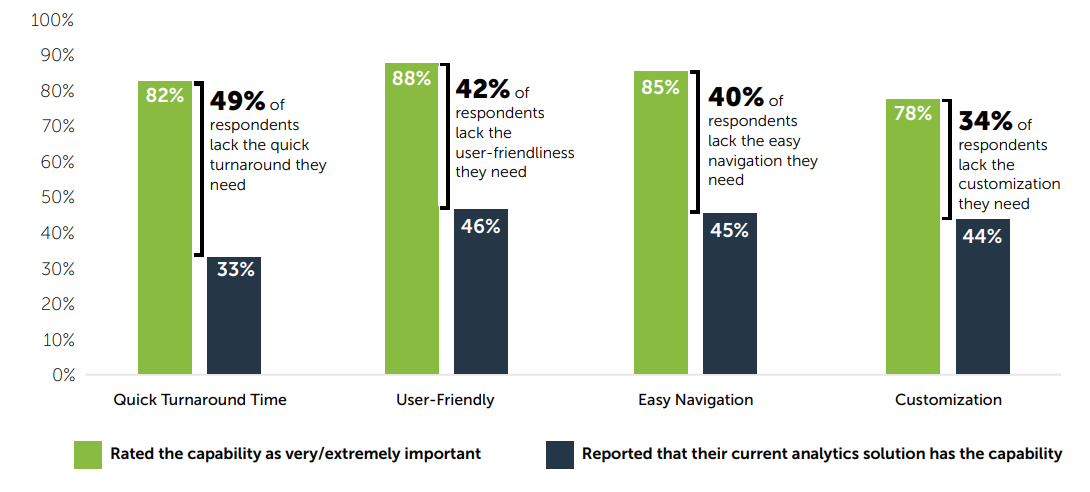Beating Robots with Cyborgs Powered by Insights

Rapid development in recent years has led to a discussion over whether or not humans will be able to survive the advancements by sentient AI robots with next-generation machine learning capabilities. However, as it stands AI largely relies on intelligence amplification, meaning the technology is simply a way for its human users to build on and amplify their own capabilities. The use of intelligence amplification relies on data compiled from sources, such as customer information, to give workers a more comprehensive view of what their customers want and need.
Software-powered technology is the key differentiator between yesterday’s robotic technology, and what is expected in the future. There is no argument that software has eaten the world, and has changed how we interact both personally and professionally. We do virtually everything through applications today – with apps geared toward specific aspects of our lives.
In this fight against an all-robot future, cyborgs will need to be created through software so humans can stand a chance.
What Makes a Cyborg?
Cyborgs can be described as application users utilizing the insights delivered by analytics to help make their decisions more effective, while also using in-depth analytics to help provide insight into an actionable decision.
Apps exist in the context of being able to help a user solve a problem by providing impactful insights. They’re also designed to implement operational best practices, letting end users be actively engaged in the decision-making process. Finally, applications put the insights into the hands of the people who implement the action – so the end goal of completing a task in an efficient manner is still applicable.
What good is a shiny new application without analytics to easily display helpful data to customers? Analytics within an application allows an easier transition from normal user into a cyborg, due to being able to make strategic decisions based on data. The compiled data can be organized and displayed with custom search results, and now employees have the data – and tools – in front of them to make important decisions. Modern software has turned non-technical users into power data users built on the data-driven building blocks frequently relied on in the workplace.
How Do You Create a Cyborg?
There are two main choices to consider: build your own solution with open-source component libraries, or pick an offering from an analytics vendor. Don’t forget that the build vs. buy debate is one that has garnered varying opinions for years, and while that won’t suddenly change, the build journey to quality embedded analytics can be convoluted with unfinalized requirements and strapped developers struggling to match functional complexity.
Signs such as increased demand for new capabilities, scaling difficulties, cost, and security issues are some of the early alarm bells that your current embedded analytics infrastructure needs to be replaced. Developers might be able to deploy quickly using bolt-on analytic solutions, but the result might lack the robust user experience that their customers desire.
As noted by Charles Caldwell, VP of Product Management at Logi Analytics: there is nothing wrong with choosing components and open source if you currently have basic requirements or are doing early proof of concept work. These solutions could help validate basic requirements, in order to better understand the requirements and ensure the market is there.
However, Charles noted that there’s a point when using analytics components libraries will begin to come up short in producing cyborgs:
“The warning signs will come as you get into the more self-service, exploratory capabilities, recommendations. That’s where you’re going to start to swamp your development team with all those requirements. And as you get into high-scale SaaS deployments, that large number of concurrent users and large data volumes tend to be two of the things that [will indicate] you’ll start to run into scalability challenges, with some of the complexity of some of these use cases.”
Later in the lifecycle, it likely won’t be worth the effort or cost to keep building on your own as the requirements become more burdensome. Using an open-source solution means the development team will spend a large amount of time gathering requirements, then mapping the requirements to the appropriate low-cost BI tools and components.
Choosing Logi Analytics will save your dev team from compromising time spent on your product’s core features and functionality. Unlike open-source alternatives built on components, an out-of-the-box solution won’t require the application to have code written for individual components.
Analytics are increasingly essential, but current solutions often fall short of expectations. A user-friendly solution that offers quick turnaround time and customization functionality is highly desirable, helping deliver decision-making assistance to users that are calling for these capabilities.
2021 State of Analytics: Why Users Demand Better
Download NowFinal Thoughts
Software teams must listen to their developers and customers to properly gauge current demands for their analytics. Product teams constantly strive to improve their user experience, engage users in a productive manner, and find new potential customers for the sales funnel. There is no harm in testing open-source components while you discover what your actual requirements are – but be sure to be on the lookout for the signs that it’s time to upgrade to a platform.
Understanding how your customers collect and interpret data cannot be overlooked, even more so with the impact of a robust analytics solution available to users. There is a major struggle to future-proof analytics, with AI greatly impacting product design – understanding AI’s role in product design must be an action item on a development team’s to-do list. It’s possible to help aid your employees as they become “cyborgs,” able to use next-generation technologies effectively to make data-driven decisions and take on the robots of the future.

